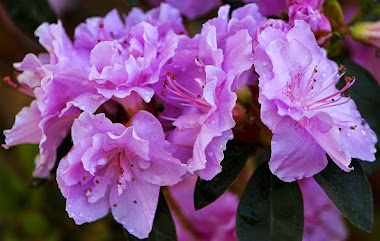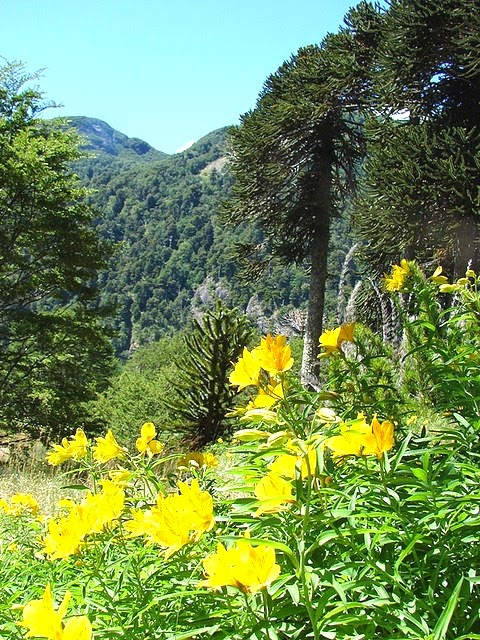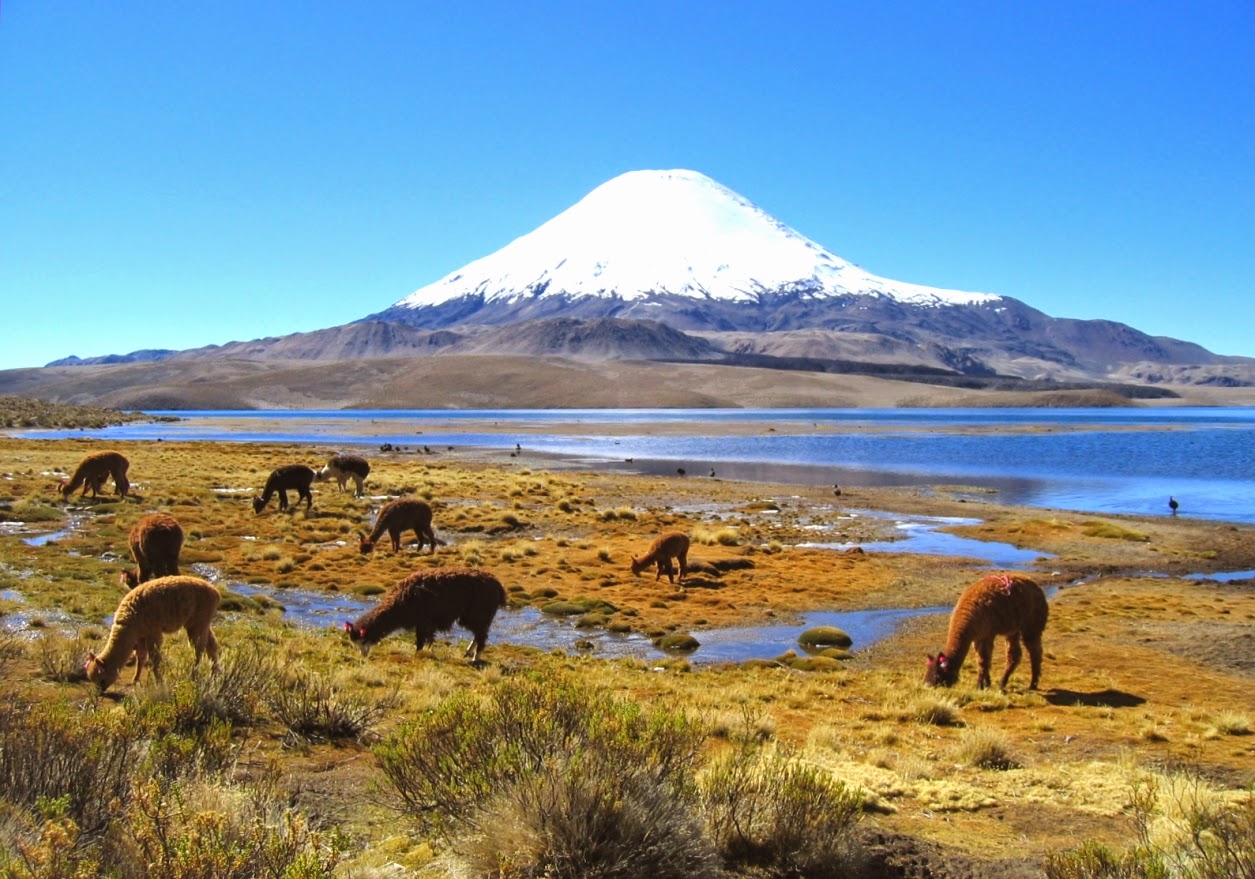This is a
words challenge and it’s fun! This post includes some words with B that relate to Chile. I also included another short video, so enjoy!
Here’s my
new list of words.
BAKER RIVER
A great
river in the Patagonia region, the Baker is considered to be the most important
reserve of hydroelectric power and also of fresh water in the Southern Cone.
The water flows deep with a very strong current. This feature has produced a
great international controversy because there is a project to construct huge dams
for hydroelectric energy that would alter all that virgin scenery. The deep
valleys would disappear under the repressed water as a result of the dams being placed there.
The dams
were approved in 2011 under the government of President Sebastian Piñera. The
whole process was then placed on hold due to world-wide protests.
The project
has recently been rejected by the present government under President Michelle
Bachelet in accordance to environmental principals.
I admit we need the energy this could provide,
but I hope I don’t live to see this project concluded.
The following
photos show the awesome scenery.
THE BAKER RIVER
Click to enlarge
Source:
brewbooks, CC BY SA 2.0. Flickr.
THE BAKER RIVER WINDING THROUGH THE SPECTACULAR SCENERY
Click to enlarge
Source: Roberto Araya Barckhahn, CC BY SA 3.0.
Wikimedia Commons
BAQUEDANO.
This name
word takes us to a very desolate locality in the extreme north of Chile. It was
famous as a train junction during the period when Chilean nitrates were being
exported to the world.
It boasts a really marvelous Railway Museum and is now a
historical site and an important tourist attraction.
At the
height of the nitrate production, it was a major feat to build railways that could
transfer the nitrates to the coast for embarkation.
The sheer
effort invested in the construction and then the running and maintenance of
these lines, defies the imagination. Just consider the fact that the engines
were driven by steam and ran in a desert zone that is the driest in the world!
Where once
production thrived, the ancient locomotives stored at the Baquedano Railway
Museum, stare out at the desolate scenery.
BAQUEDANO RAILWAY MUSEUM
Click to enlarge
Source: Public
Domain, Wikimedia Commons
THE BOXCAB, A RELIC FROM THE 1930s.
Some of
these are still in use today.
Click to enlarge
Source:
Kabelleger.David Gubler. CC BY SA 3.0. Wikimedia Commons
BEAGLE CHANNEL
Chile
provides us with magnificent contrasts, as we leave the dry desert north and
return to the cold southern reaches of the country.
The Beagle
Channel is the famous channel in the extreme south of the South American
continent that joins the Atlantic with the Pacific Ocean.
It was navigated by
Charles Darwin in his historic voyage on the Beagle, a small sailing ship.
Hence its name.
It has a
collection of the largest and most impressive glaciers in the Americas. The
scenery is immensely beautiful.
A GLACIER ON THE BEAGLE CHANNEL
Click to enlarge
Source:
Rayandbee, CC BY 2.0. Wikimedia Commons
THE MAGNIFICENCE OF THE EXTREME SOUTH FRAMES THE BEAGLE CHANNEL
Click to enlarge
Source: Liam
Quinn, CC BY SA 2.0. Wikimedia Commons
BRITISH
ARCH.
This is a
historical monument placed in Valparaiso. It was presented to the city of
Valparaiso in 1910 by the resident British community. It commemorates the first
centenary of Chile’s Act of Independence.
It shows a British lion and also the images of
four Britons who fought for Chile’s freedom from Spanish rule: Thomas Cochrane,
Bernardo O’Higgins, Robert Simpson and Jorge O’Brian.
At present
it is a much cherished landmark where tourists like to get photographed.
The British
presence in Chile was of great historical importance during the forging and
development of this lovely and interesting country.
THE BRITISH ARCH AT VALPARAISO
Click to enlarge
Source: Robert
Cutts, CC BY 2.0. Flickr
Well, there
you have them: four interesting words that describe aspects of my country,
Chile, all starting with the letter B.
And to close,
here is my video about the Beautiful B’s. I would be very happy if you looked
at it, this is a new achievement for me.
Source: Joan Robertson CC BY via YouTube
I hope you enjoyed this post and the video!
I hope you enjoyed this post and the video!
SPANISH
VERSION.
(This blog is bilingual and can be used for the study of languages)
Este artículo corresponde a un desafío, que
consiste en escribir artículos que incluyan palabras que empiezan con una
cierta letra del abecedario. El presente post corresponde a palabras que se
inician con B y que se refieren a Chile.
Además hay un corto video que es original. ¡Ojalá lo disfruten!
Aquí va la lista de palabras.
RIO BAKER
Un gran río en la región de la Patagonia
chilena, el Baker es considerado como la más importante reserva del Cono Sur, tanto
de energía hidroeléctrica como de agua pura. Sus aguas profundas fluyen en
forma muy corrientosa.
Esta característica ha dado lugar a una gran
controversia internacional debido a la existencia de un proyecto para la construcción
de enormes represas para la producción de electricidad. Este proyecto
produciría grandes modificaciones en estos paisajes aún vírgenes. Los profundos
valles desaparecerían bajo el agua represada como resultado de estas
construcciones.
El proyecto de las represa (Hidroaysén) fue
aprobado en 2011 bajo el gobierno del residente Sebastián Piñera. La propuesta
se congeló en su totalidad debido a las protestas mundiales al respecto.
Recientemente, el actual gobierno de la
Presidenta Michelle Bachelet ha rechazado el proyecto en base al enfoque
medioambientalista propuesto durante su campaña electoral.
En lo personal, reconozco que el país necesita
de la energía a producir, pero espero sinceramente que no se concrete algo
parecido en lo que me queda de vida por delante.
A continuación, las fotos muestran el impresionante
paisaje.
BAQUEDANO.
Este nombre nos lleva a una desolada
localidad del extremo norte de Chile.
Otrora fue una famosa central ferroviaria
durante el período en el que el salitre chileno se exportaba al resto del
mundo. Hoy en día puede alardear de la presencia de un maravilloso Museo Ferroviario,
un sitio de gran interés histórico y de atracción turística.
Durante los años de la fiebre del salitre,
era una tarea titánica construir los ferrocarriles que pudiesen transportar los
nitratos hasta la costa para su posterior embarcación.
En realidad el desafío de construir estos
sistemas de transporte y luego mantenerlos en movimiento y en buen estado de
mantención, resulta un desafío para la imaginación. Basta sólo pensar que las
locomotoras funcionaban a vapor (de agua) y atravesaban los parajes desérticos más
secos del planeta.
Donde alguna vez bullía la producción
industrial, las antiguas locomotoras estacionadas en el Museo Ferroviario de
Baquedano contemplan inmóviles el desolado paisaje del desierto.
Se incluye una foto de la tornamesa del
Museo y otra que muestra un tren cuyo modelo data de la década de 1930. Algunos
de estos últimos todavía están en operaciones.
EL CANAL BEAGLE.
Chile nos ofrece contrastes magníficos. Nos
alejamos del árido desierto nortino y
retornamos a los fríos parajes del
extremo sur de este largo país.
El Canal Beagle es el afamado pasaje del extremo sur del continente
Sudamericano que une el Océano Atlántico con el Océano Pacífico. Lo navegó
Carlos Darwin en su histórico viaje a
bordo del Beagle, una pequeña nave a vela. De ahí su nombre actual.
El Beagle nos ofrece una colección de los
glaciares más grandes y más impresionantes de las Américas. El paisaje es increíblemente
bello.
Las fotos muestran uno de los glaciares y
el paisaje que enmarca las costas del Canal.
EL ARCO BRITÁNICO.
Se trata de un monumento histórico ubicado
en el puerto de Valparaíso. Fue donado por la comunidad Británica residente en
el año 1910 para conmemorar el primer centenario de la Independencia de Chile.
El Arco ostenta un león Británico y también
las imágenes de cuatro británicos que lucharon por la independencia de Chile: Thomas Cochrane, Bernardo O’Higgins, Robert
Simpson y
Jorge O’Brian.
En el presente e un hito muy querido donde
los turistas se fotografían con agrado.
La presencia Británica en Chile fue de gran
importancia histórica para el surgimiento y posterior desarrollo de este bello
e interesante país.
La foto muestra el Arco en todo su
esplendor.
Y ya está, cuatro términos que describen
aspectos de mi país y que empiezan con la letra B
Y para cerrar, mi video, creado
especialmente para este post
¡Espero les haya gustado el artículo y el
video!
============
So that`s
it for now and I hope to see you in my next post.
© jveronr
2014 (Joan Veronica Robertson)
I’d love to
receive your comments, just click the word “comments” below.






.%2BLiam%2BQuinn%2C%2BCC%2BBY%2BSA%2B2.0.%2BWikimedia%2BCommons.jpg)













